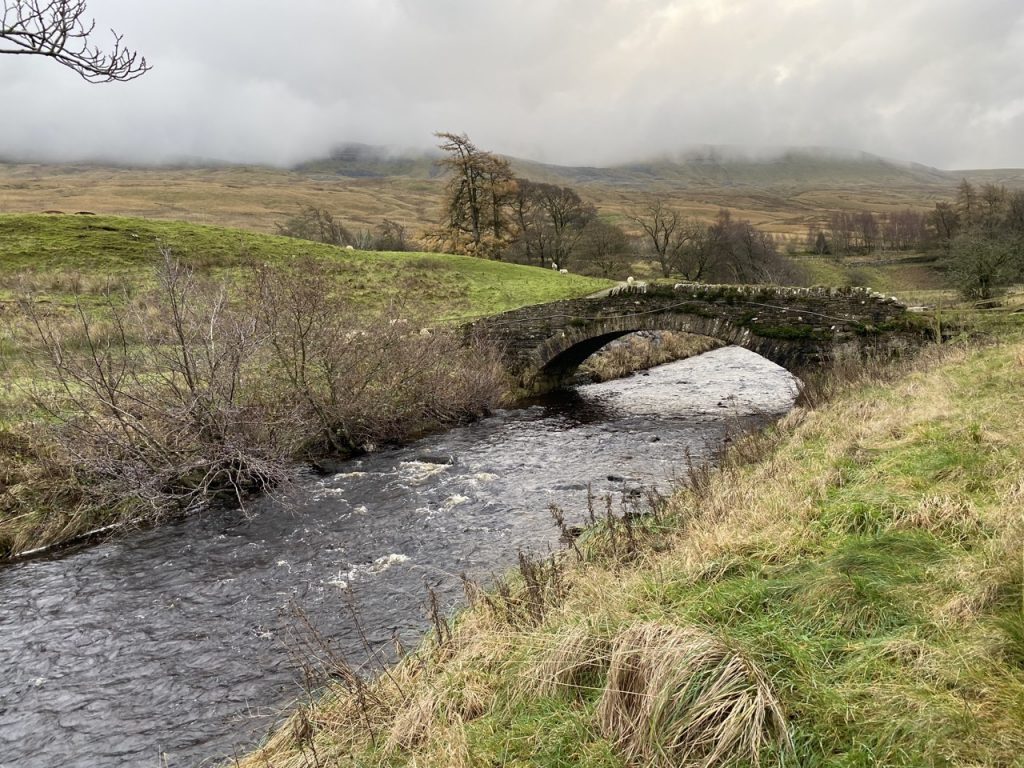6.48 miles 4h 12m ascent 197m
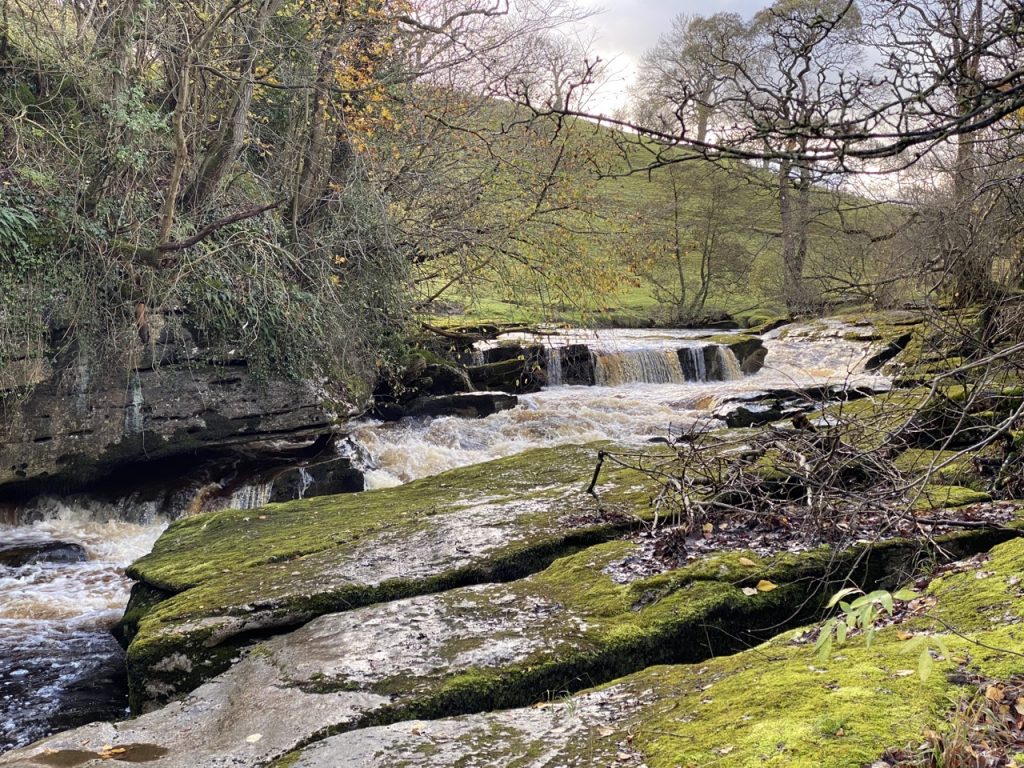
Stenkrith Park-Thrang
Part 10 was to be Stenkrith to Hellgill with a loop back to Thrang along the Pennine Bridleway. But misfortune struck and we only managed the Thrang-Hellgill-Thrang loop of part 10. We had to miss out the five or so miles from Stenkrith to Thrang. Today we plugged that gap.
It had rained for days on end but this Tuesday was forecast to be dry so we headed back to the Eden Valley. It was warmer than expected and the rain did indeed stay away though the previous days’ rain had soaked the ground and poured over the waterfalls at Stenkrith.
It was an easy walk over fields to Halfpenny House then a farm track to Wharton Hall. Built in the 14th century the hall was once grand enough that Mary Queen of Scots, and King James I stayed there. It has now fallen into ruin and sits within a modern farm.
Perhaps the most famous member of the Wharton family was Philip, the 1st Duke of Wharton (1698-1731). A politician, his interests outside Parliament were said to have revolved around whoring, gambling, drinking and mischief making. Nothing unusual there but he also founded the original Hellfire Club and fought on the side of the rebel Jacobite army in the siege of Gibraltar. After his death in 1731, Alexander Pope wrote of him….
Wharton, the scorn and wonder of our days,
Alexander Pope
Whose darling passion was the lust of praise:
Born with whate’er could win it from the wise,
Women and fools must like him, or he dies;
Tho’ wond’ring senates hung on all he spoke,
The club must hail him master of the joke.
Shall parts so various aim at nothing new?
He’ll shine a Tully and a Wilmot too;
Then turns repentant, and his God adores,
With the same spirit that he drinks and whores;
Enough if all around him but admire,
And now the Punk applaud, and now the Friar.
Thus with each gift of nature and of art,
And wanting nothing but an honest heart;
Grown all to all, from no one vice exempt;
And most contemptible, to shun contempt;
His passion still to covet gen’ral praise,
His life, to forfeit it a thousand ways;
A constant bounty which no friend has made;
An angel tongue which no man can persuade;
A fool with more of wit than half mankind;
Too rash for thought, for action too refined;
A tyrant to the wife his heart approves;
A rebel to the very king he loves;
He dies, sad outcast of each church and state,
And, harder still, flagitious, yet not great.
Ask you why Wharton broke through ev’ry rule?
Twas all for fear the knaves should call him fool.
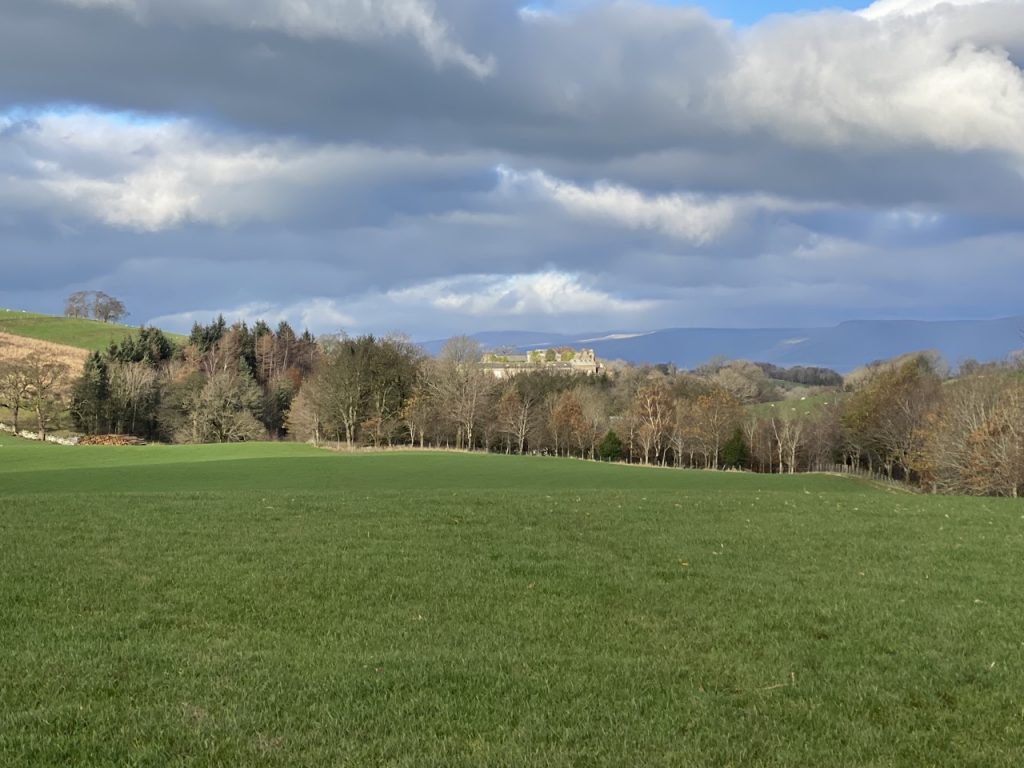
We didn’t try to get in to Wharton Hall itself. The Eden Way passes through the farm then on to a farm track. The photograph above is taken looking back towards Wharton hall from a hillside not far from Lammerside Castle. Getting to that point had taken a little longer than it necessary since we missed our turn off the track, just after Mire Close Bridge. We had walked on along the farm track for a good five minutes before realising. A pile of logs had hidden the gate as we needed to use.
Back on track, Lammerside Castle was over the next rise. A sorry looking ruin. I decided not to go inside since the walls looked as though might shed rocks at any time. The castle was built in the 12th century but significantly strengthened in the 14th century, probably in response to Scottish raids. It has a good views southwards, towards the mouth of Mallerstang valley, but sitting in a hollow, its views northwards are blocked by the hill behind it. Presumably the upper floors were high enough that the castle’s occupants could see any approaching reivers.
I proceeded along a narrow vale watered by the Eden, and passed by a very ancient square tower called Lamerside-hall, formerly by the sad name of the Dolorous Tower. Something was told me of a Sir Tarquin and Sir Caledos, so that probably the place had been the subject of dire adventure.
Thomas Pennant: A tour from Downing to Alston-Moor, 1801
I am a little sceptical that Lammerside castle is the Dolorous Gard of Arthurian legend. It would become Lancelot’s castle and he would be buried there. The present castle doesn’t look impressive enough but I suppose, an older, more impressive, castle may have stood here before the stone castle was built. I have another suggestion for the sad nature of the place. Could it be a folk memory of the local men who had gathered at Lammerside Castle in the uprising against Henry VIII, the unsuccessful Pilgrimage of Grace. Ten of these men were hanged on 24 February 1537.
Rather than a magnificent wooden castle, inhabited by a knight of the Round Table, Lammerside, was probably home to a shepherd. Its name, originally recorded as Lambartsete probably means Lambert’s shieling, from Lambert and the Old Norse sǽtr.
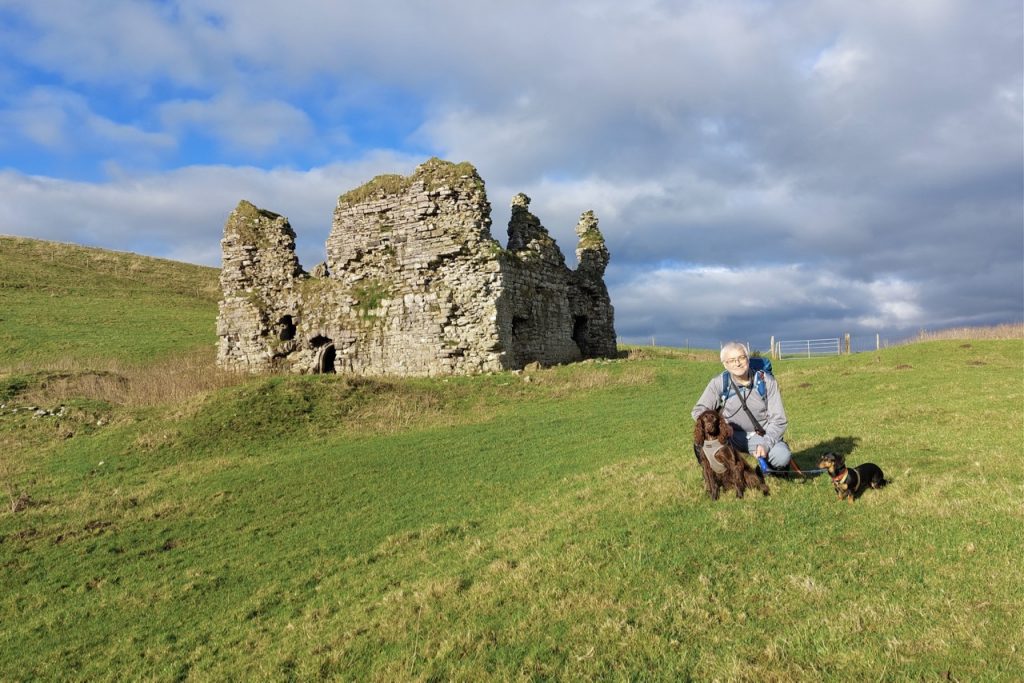
Beyond Lammerside we joined a well defined track, with a fingerpost telling us it was the bridleway to Shoregill. It winds around Birkett Common, which is actually a thousand foot hill. The name means birch covered headland, and you can see the headland part is accurate but the birch wood is long gone.
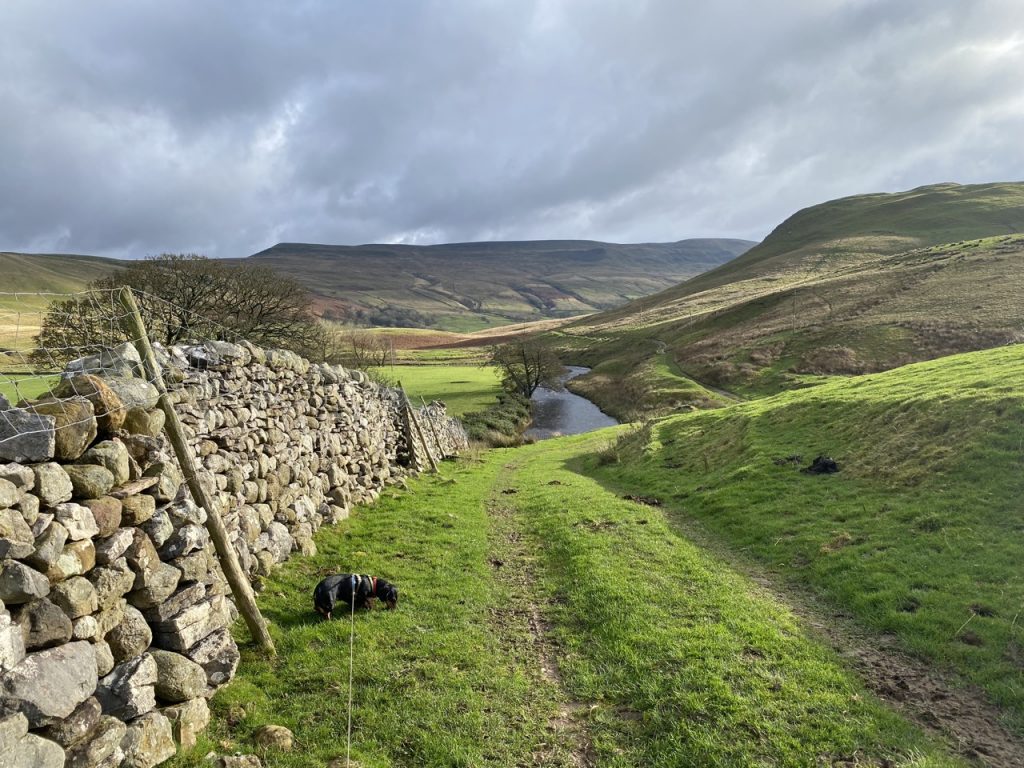
There are limestone outcroppings, one of which provided seating for our elevenses, and old lime kilns suggesting that they have been useful in other ways. The only downside was that I lost my new rain-cape – despite it being bright orange. The bridleway was easy walking and gave us good views of the river. Ponies grazed the low lying land opposite us and I think it was around here that we first spotted the Eden Benchmark up on the opposite ridge. Eagle-eyed Audrey did spot it before me, but eventually even I could see it.
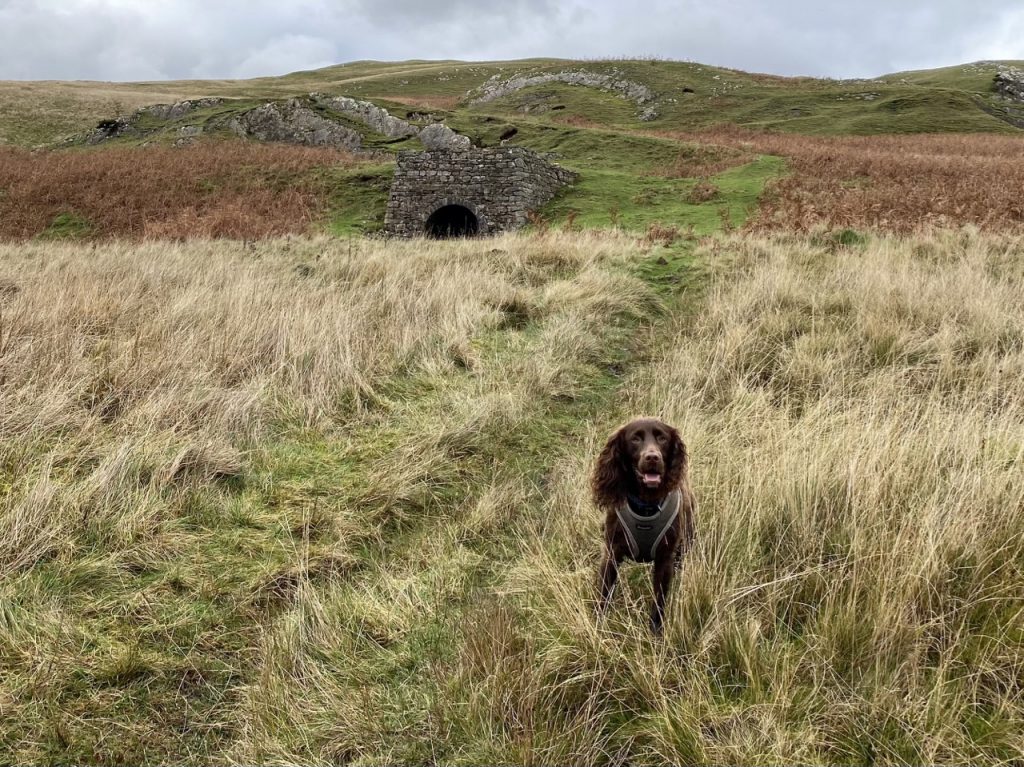
Walks aren’t complete without a navigation error but we had already made an offering (our time) so I thought we had paid our dues. But. A further offering was required. I don’t know the origin of its name but at Tommy Road, I took us the wrong way.
Turning left down Tommy Road would have been easier. I write that with the benefit of hindsight. We carried on across the road and along the bridleway, a route clearly shown on the OS map but one which has matured from ‘through route’ to ‘used to be a route’. We were faced with boggy ground, steep banks, barbed wire fences, gates long-retired from opening, and a ‘tempting’ ford. Dues paid, we re-emerged onto Tommy Road.
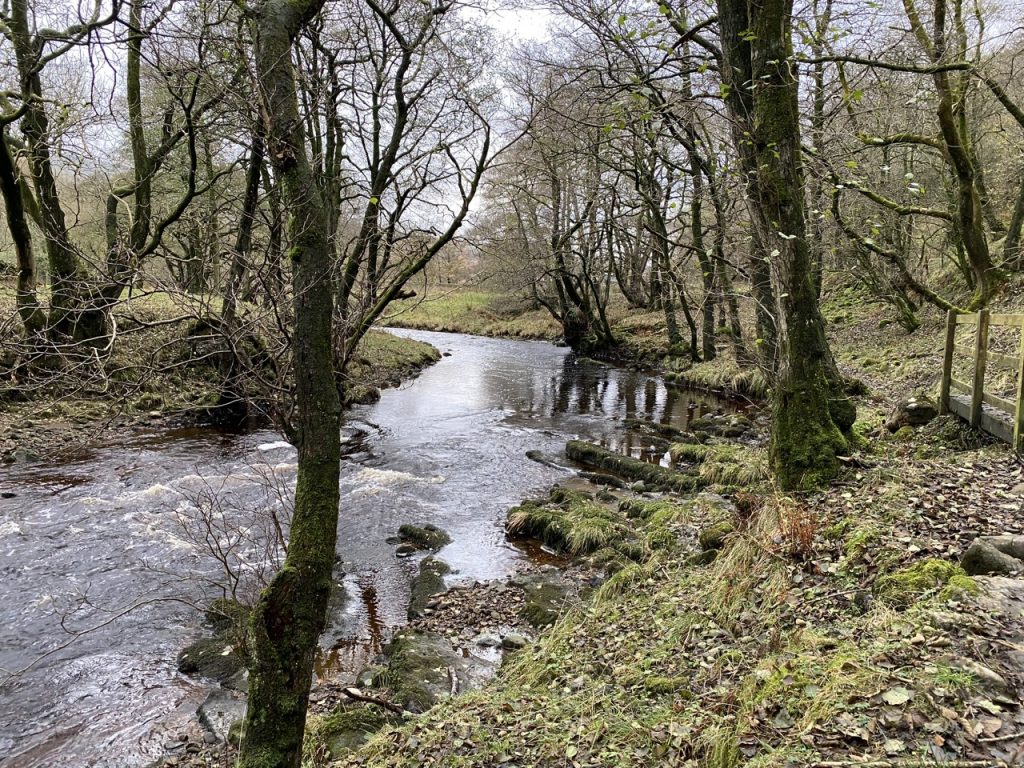
A gate and footbridge soon brought us back to the river where we walked through an autumnal woodland, with Pendragon Castle on the opposite bank. Like Lammerside, this castle dates back to Norman times and despite local folklore is unlikely to have been the home of Uther Pendragon, Arthur’s father.
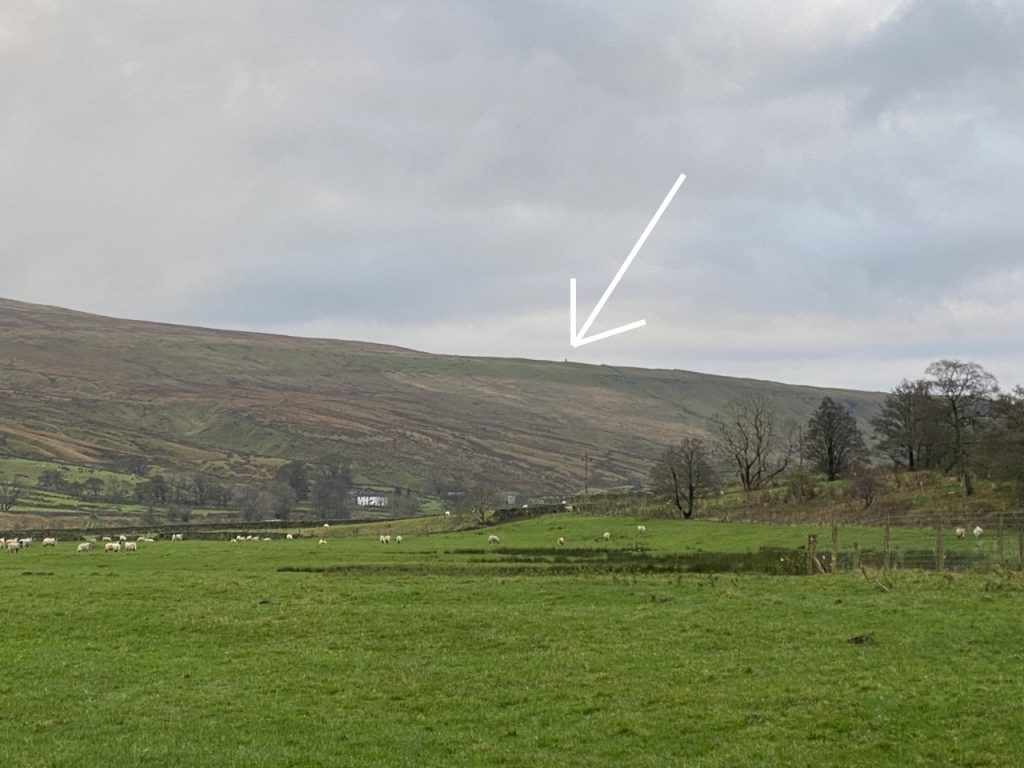
There were some wet sections still to come but by then we both already had wet feet so we just forged on through. All this watery walking had at least cleaned our boots and the dogs’ feet so it was frustrating that we had to tramp through two slurry covered farmyards in the final half mile.
Thrang Bridge marked the end of the day’s route. The gap in our Eden Way adventure plugged at last.
